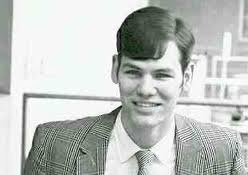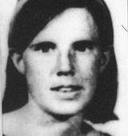Gregory A. Fournier's Blog, page 52
July 17, 2012
Rendezvous with Death - Part Two
 My goal in recounting the horrible deaths of seven young women in Washtenaw County, Michigan, in the late 1960s, is not to evoke the pain and sorrow of friends and family, which is bound to happen, but to present an up-to-date account of what occurred so long ago, which has been obscured by time, hasty reporting, and spotty police work.
My goal in recounting the horrible deaths of seven young women in Washtenaw County, Michigan, in the late 1960s, is not to evoke the pain and sorrow of friends and family, which is bound to happen, but to present an up-to-date account of what occurred so long ago, which has been obscured by time, hasty reporting, and spotty police work. I have researched the misnamed "coed murders" and interviewed people who knew the victims and discovered details not generally known to the public. I am attempting to bring together living history accounts, over 700 pages of news clippings from the era, the Michigan State Police report the prosecutor of this case worked from, perceptions of people who knew John Collins - the alleged serial killer, and several post trial developments which will give a fuller picture of this story than ever told before.
The national obscurity of this case is largely due to being overshadowed by the Charles Manson case in Los Angeles, California. John Norman Collins was arrested the night of July 31, 1969. On August 10th, just over a week later, the bodies of pregnant Sharon Tate, director Roman Polanski's starlet wife, and three others people, were ruthlessly slaughtered in the Hollywood Hills. The discovery and the murder case that followed became known as the "Helter Skelter" murders. The national spotlight suddenly shifted from Washtenaw County and the sullen John Collins, to the West Coast and wildman Charles Manson. The spotlight suddenly dimmed at the Ann Arbor courthouse.
The case of the Michigan murders faded into the background, except for those who knew the victims and/or the suspect, or for people who lived in the area during those tense two summers between 1967 and 1969. The dim shroud of time, misinformation leaked by and to the press, the Blue Wall of Silence, and a "fictionalized" account of the murders rushed into print because of a publishing deadline, have obfuscated many of the facts and details of this case.
It should be remembered that John Norman Collins was convicted of only one of the seven murders attributed to him. The public knows a great deal more about Karen Sue Beineman than any of the other victims because of the public court proceedings. But Mary Flezsar, Joan Schell, Maralynn Skelton, Dawn Basom, Alice Kalom, and Roxie Phillips, the six other murdered young women linked to Collins, have never had their day in court or had their stories told publicly.
An interesting and pertinent development came to light thirty-seven years after John Collins was convicted of murder in the first degree of Karen Sue Beineman. DNA forensic evidence cleared Collins of one of the murders attributed to him. What of that?
(To be continued...)
Published on July 17, 2012 00:00
July 13, 2012
Rendezvous with Death - Part One

Death comes in many guises and everyone gives up the ghost eventually. It is our mortality which strikes a common chord in human beings. Natural causes take the greatest share of humanity, armed military conflicts decimate our ranks even further, and chance accidents take their toll on many people. Some unfortunate souls embrace death after the pain of living becomes too much for them to bear, but few would argue that the most difficult kind of death for most people to reconcile is the wanton and senseless murder of the young and innocent.
Full of life one moment - facing down death the next - these victims are not only robbed of their futures, but also of their pasts. The memories of family and friends are forever tainted by their unexpected and violent deaths. They carry the pain and the burden of their loved ones passing for their lifetimes, and their sorrow spills onto future generations. All are punished.
In my efforts to tell the complete story of the Michigan murders (1967-1969) of six young women in the Ypsilanti/Ann Arbor area and a seventh murdered woman in Salinas, California, I have gone beyond what was reported in the newspapers and previously written about these crimes. I have tried to reach out to friends and family of the victims to see if some of the loose ends can be tied up.
By reexamining and drawing together evidence and anecdotal accounts from previously un-interviewed parties, I want to tell the larger story of the person alleged to have killed these young women, John Norman Collins. He was tried and convicted for only one of the murders - the sex slaying of Eastern Michigan University freshman, Karen Sue Beineman, in 1969. Six of the seven other killings remain officially unsolved. Anyone who feels he or she has pertinent information regarding any of the principal figures in this series of murders from the late sixties can contact me confidentially at my gmail address: gregoryafournier@gmail.com.
Needless to say, not everyone is sympathetic with my goal of setting the record straight. I hope to tell as much of this case as possible, given the lack of public information available to me. A Washtenaw County court clerk told me last year that public records prior to 1970 are unavailable. The Ypsilanti City Police revealed to me that they don't keep records prior to 2006. The Michigan State Police have informed me that autopsy and forensic reports are not available because these cases are still considered part of an open police investigation. After forty-five years, I'm glad to know the police are still on the case.
(To be continued...)
Published on July 13, 2012 00:00
July 10, 2012
The Six Guiding Principles of Secular Humanism
Secular Humanism is a belief that humans are responsible for their actions without the presumption of divine intervention or the surrender to fate. Humanists are moved by the human condition and feel society has a responsibility to work for the improvement of life without the interjection of superstition or mythology. Virtue and morality are completely compatible with this philosophy.

For more information, check out the link below:
americanhumanist.org

For more information, check out the link below:
americanhumanist.org
Published on July 10, 2012 00:00
July 7, 2012
Detroit Shout Out 4 - Concert of Colors - July 12th-15th
 If you are in the Detroit area between July 12th and the 15th, the
Concert of Colors
is a not to be missed event.
If you are in the Detroit area between July 12th and the 15th, the
Concert of Colors
is a not to be missed event.This free 20th anniversary jamfest is held in four different venues around town to accommodate a huge lineup of talent and many musical styles to please virtually every taste.
Check out the following link for more detailed information. http://concertofcolors.com/
Published on July 07, 2012 00:00
July 5, 2012
The John Norman Collins Case - Dredging Up the Past
 John Norman Collins Confident He Can Beat the RapAs I continue to do research on the string of brutal sex crime murders in the university towns of Ypsilanti and Ann Arbor in the late 1960s, I am amazed that John Norman Collins has his supporters, people who are not happy or sympathetic with my quest to tell this tragedy as truthfully and fully as possible. Collins, now in Michigan prisons for over forty-two years, still inspires loyalty.
John Norman Collins Confident He Can Beat the RapAs I continue to do research on the string of brutal sex crime murders in the university towns of Ypsilanti and Ann Arbor in the late 1960s, I am amazed that John Norman Collins has his supporters, people who are not happy or sympathetic with my quest to tell this tragedy as truthfully and fully as possible. Collins, now in Michigan prisons for over forty-two years, still inspires loyalty.Of several people in his hometown of Center Line who still think Collins was railroaded, none have provided any leads or evidence of his innocence, only the vague recollections that he was a local star athlete, the Golden Boy of his St. Clement's High School class of 1965.
A few people I've spoken with from his high school, grudgingly admit that Collins may have been guilty of one murder but not the others. They say something must have happened to John after he left his hometown. The theme I keep hearing is that he got involved in drugs at college and hung out with a bad crowd. He did drink beer and join a jock fraternity, but John was a servant of his self-will. He wasn't led by others; he was the leader. On motorcycle outings in the farm country north of Ypsilanti, John was always leading the pack, according to people who rode with him.
 Karen Sue BeinemanThen there are the friends and family who don't want to be reminded of the pain and suffering of their loss. Of the eight murders John Collins is accused of committing, only two have been publicly solved: Karen Sue Beineman's murder, which Collins was convicted of, and the murder of Jane Mixer, which DNA proved thirty-five years later that Collins didn't commit.
Karen Sue BeinemanThen there are the friends and family who don't want to be reminded of the pain and suffering of their loss. Of the eight murders John Collins is accused of committing, only two have been publicly solved: Karen Sue Beineman's murder, which Collins was convicted of, and the murder of Jane Mixer, which DNA proved thirty-five years later that Collins didn't commit.Five other Michigan young women and one from Oregon visiting California at the time of her death are technically listed as "cold cases." Because of the expense of bringing these other cases to trial and the belief that law enforcement has their man, the other murders have remained officially unsolved leaving many questions unanswered.
 Jane MixerBecause of many factors, the facts of this dark chapter in the history of Washtenaw County are obscured by time and a desire of county officials to have this sad episode forgotten. Public documents for this case are not available. But history and the public interest need to know the facts as far as they can be shown.
Jane MixerBecause of many factors, the facts of this dark chapter in the history of Washtenaw County are obscured by time and a desire of county officials to have this sad episode forgotten. Public documents for this case are not available. But history and the public interest need to know the facts as far as they can be shown.Fortunately, a number of people who knew Collins and/or the victims in this case are now coming forward with new threads to this story which I hope to weave into whole cloth in the book I'm working on, In the Shadow of the Water Tower.
In the next several weeks, I will be interviewing as many of these people as I can. If you have any relevant information to offer, please contact me at gregoryafournier@gmail.com.
Published on July 05, 2012 00:00
July 1, 2012
25 Lies Writers Tell Themselves
 Every writer has had writers' block or will get it. Most of us write because we want to, not because we are forced to. But without self-motivation, it's easy to make excuses for not writing. Waiting for the muse to strike is poetic but not practical.
Every writer has had writers' block or will get it. Most of us write because we want to, not because we are forced to. But without self-motivation, it's easy to make excuses for not writing. Waiting for the muse to strike is poetic but not practical.The link below is an excellent post about "25 Lies Writers Tell Themselves and Start To Believe." I don't know about you, but I take my motivation where and when I can get it.
http://terribleminds.com/ramble/2012/03/27/25-lies-writers-tell-and-start-to-believe/
Published on July 01, 2012 00:00
June 24, 2012
Zug Island Author Interview - Gregory A. Fournier
 Bruce Harding, managing director of the Los Angeles Book Festival, interviewed me last week about my debut novel which earned an Honorable Mention at their 2011-2012, March 3rd awards ceremony held at the Roosevelt Hotel in Hollywood.
Bruce Harding, managing director of the Los Angeles Book Festival, interviewed me last week about my debut novel which earned an Honorable Mention at their 2011-2012, March 3rd awards ceremony held at the Roosevelt Hotel in Hollywood.***************************************************************
Zug Island: A Detroit Riot Novel marks the debut of novelist Gregory A. Fournier, who puts his spin on heavy industry in the grimy backwaters of Detroit's steel and iron mills. The story set in 1967, follows white Jake Malone, kicked out of college, and Theo Semple, a black worker at Zug Island. Together they discover a friendship that challenges the conventions of the times, as the cauldron of racial animus bubbles over. We caught up with the author to ask a few questions about the story's creation and its origins in a blue collar world that is rapidly vanishing.

Bruce: How do you feel about Zug Island, the actual location? On the one hand, you must have an affection for the place, given that you've devoted enough focus on it to create a work of art. On the other hand, your book pulls no punches on its aesthetics.
Greg: I am still in awe of the enormity of Zug Island and the raw energy it takes to make iron and steel. The Medieval base elements of fire, earth, water, and air all play their part in the alchemy of steel making. It was the education of my life, and every time I'm in the Detroit area, I make a pilgrimage there. The steam cloud still billows like clockwork from the quenching station.
Bruce: Tell us about the people Zug Island is based on. Are they employed there out of desperation or desire or inevitability, as your character seemed to be?
Greg: People who worked on the labor crew weren't looking for careers; they needed jobs. These guys were working class people with no middle-class pretense. Life at Zug Island was raw and close to the ground, and it had a primal energy about it lacking in the suburbs of Detroit. Most of the characters in my novel are based on my memories of real people.
Bruce: Most novels are escapist in their settings. Yet you chose to look at some ugly truths. Tell us your reasoning.
Greg: Racism is an issue more often swept under the rug than openly discussed these days. But many of the same attitudes and prejudices that created an atmosphere for the race riots of the sixties abound today, more subtle perhaps, but still deeply rooted in white supremacy. Whether you hide it under a sheet or a teabag, racism steeps through.
Bruce: Was Zug Island a hard book to write emotionally?
Greg: No! But when I finally came up with the ending after four attempts, it did break me up some, and it still does each time I read it. Fortunately, many of my readers share that experience with me.
Bruce: Tell us your impressions of Detroit today.
Greg: I believe Detroit is moving in a positive direction after over fifty years. Much of the old city has been razed, but some of the historical architecture can still be seen. It's tough being a Detroiter. It's either boom-or-bust depending on the trends of the automobile business. The Big Three have been reporting strong earnings, but the area needs jobs and diversification. Overall, I'm optimistic that the city is on the rebound thanks to the leadership of Detroit's mayor, ex-Detroit Piston, Dave Bing.
Bruce: What advice is there for someone who is trapped in a Zug Island situation?
Greg: Save your money and look for another job. But this is the reality, there is a class of men who don't mind physical work or getting their hands dirty. The pay and the benefits are good, so the hardships pale in comparison. Zug Island is a world unto itself, and most people seem to tolerate life there pretty well.
Bruce: Would you write about race relations again?
Greg: Yes, and I may. Though this is a topic many people shy away from, it is a fundamental aspect of American society that needs to be explored in a contemporary context. Because of the issues complexity, the story lines are endless. Racism in America is an issue that should be on the trash heap of history, but first it needs to be documented. I think their is an attitude of white supremacy that lingers particularly in people who are socially unsophisticated. That's one of the things that bothered me about the era then and bothers me today. There was a very pronounced color line and there were areas you just don't go into as a black person and areas that white people were not welcome to go in. I was privileged to walk on both sides of that line for a short period of time.
Bruce: Where were you when the Detroit riots happened? Has your perspective on its causes changed?
Greg: If you haven't guessed, Jake is a representation of myself, and I was with my buddy from work, Otis, wandering around 12th St. a few hours before the riots began when a blind pig was raided by Detroit police. That part of my novel is directly based on personal experience, as is most of it. When I returned to college a year later, I was able to place the riots in a larger sociological context.
Bruce: Was writing the book harder than you believed it would be?
Greg: Compared to book promotion, writing seems easy. Once I retired from teaching, I cobbled together several short stories I had worked on for the previous five summers. Then I researched Zug Island, wrote an introduction, and the project took off. The ending was the hardest part for me, and I wrote four different ones until the final ending revealed itself to me in an epiphany. All-in-all, I enjoyed writing Zug Island, so it didn't seem like work to me.
Bruce: Although Zug Island is a difficult place to work, you have to wonder if there are not enough "Zug Islands" anymore....
Greg: Not everyone can become a celebrity or a professional athlete. There has to be something for people who are not particularly motivated to be white collar workers or service employees. There are people who prefer physical work - there is a certain Zen to it. But most of those jobs are permanently gone.The world is rapidly changing and so must the people in it.
Bruce: What's next for you?
Greg: My next project has the working title, The Water Tower. It is the true crime story of John Norman Collins, the alleged co-ed killer in Ypsilanti and Ann Arbor, Michigan, between the summers of 1967-1969. This case fell through the cracks nationally because of the Charles Manson case which broke open at the same time. I'm discovering some interesting things about the Collins case.
Available on Amazon.com and Kindle ebook.
Published on June 24, 2012 10:51
June 22, 2012
Grandma's French-Canadian Meat Pie
 Tortiere - Traditional Christmas Meat PieWhen I was a kid growing up in Detroit, my French-Canadian grandmother would make French meat pie that tasted like nothing I have ever had before or since. There was something about the spices and the texture that I have been craving for years.
Tortiere - Traditional Christmas Meat PieWhen I was a kid growing up in Detroit, my French-Canadian grandmother would make French meat pie that tasted like nothing I have ever had before or since. There was something about the spices and the texture that I have been craving for years.These pies were a Christmas tradition in our family as grandma would make one for each family of her seven children, and of course, serve the rest up for the holiday repast. These pies freeze up well for later use and make great pot pies also.
I asked the women in my family if anyone had grandma's recipe, but nobody had a copy of it. Then it struck me, like so many women of her day, she didn't need a blueprint; she just knew how to make it. My mother tried to make it several times, but it never lived up to grandma's.
 Looks great on the plate!My grandmother met my grandfather while she was working as a young cook and baker for a bunch of lumberjacks who cut Canadian timber for box framing in the copper mines of Sudbury, Ontario.
Looks great on the plate!My grandmother met my grandfather while she was working as a young cook and baker for a bunch of lumberjacks who cut Canadian timber for box framing in the copper mines of Sudbury, Ontario.Coincidentally, they both shared the same last name - Fournier. They met, married, and eventually moved to the states. My grandfather was the first of my family to work at Zug Island outside of Detroit.
After years of trying to get a family recipe, it finally struck me to just google it. I found over a dozen recipes with the same basic ingredients but with some variation of the spices used. It may take me some time to sample several of these recipes, but I'm coming closer to finding the one that tastes like grandma's.
http://suite101.com/article/french-canadian-meat-pie-a37231
Published on June 22, 2012 00:00
June 18, 2012
The Detroit-Windsor International Trade Crossing
 Artist's rendering of International Trade Crossing
Artist's rendering of International Trade CrossingTen years of negotiations between Michigan and Ontario has resulted in an agreement to build a new bridge for commercial traffic between the United States and Canada. The bridge will create jobs, save cartage time, and relieve overcrowding on the Ambassador Bridge and in the Detroit/Windsor tunnel.
The new bridge will touchdown in Del Ray just north of Zug Island and only two miles south of the current international bridge which will continue to serve the general public of both countries. The bridge will conveniently link north/south I-75 in Michigan with east/west Highway 401 in Windsor.
The neighborhood of Del Ray has needed a face lift for a long while, and the U.S. Customs plaza planned for there should help the abandoned area. I can't think of a better use for this depressed but once proud neighborhood. The view looking down onto Zug Island will become an industrial icon welcoming commerce into the country. The contrast between the modern bridge and the rust belt behemoth will be striking to see.
Details about the international agreement, the cost, financing, jobs, and economic impact are in the Crain's Detroit Business link below. This enterprise should give the local economies of Windsor and Detroit a long term boost.
 Zug Island where the Rouge and the Detroit Rivers meet.http://www.crainsdetroit.com/article/20120615/FREE/120619934
Zug Island where the Rouge and the Detroit Rivers meet.http://www.crainsdetroit.com/article/20120615/FREE/120619934
Published on June 18, 2012 00:04
June 16, 2012
Noted Dough Boy Dies
 Fresh at his Malibu home in happier days.Veteran Pillsbury spokesman Pop-N-Fresh died Wednesday of a severe yeast infection. He was fifty-eight. He was buried Friday in one of the biggest funerals Malibu has ever seen.
Fresh at his Malibu home in happier days.Veteran Pillsbury spokesman Pop-N-Fresh died Wednesday of a severe yeast infection. He was fifty-eight. He was buried Friday in one of the biggest funerals Malibu has ever seen.Dozens of celebrities turned out to show their respects including Mrs. Butterworth, the California Raisins, Hungry Jack, Sara Lee, Betty Crocker, the Keebler Elves, the Hostess Twinkies, and rapper, Jiffy Mix.
The gravestone was piled high with flours, as long time friend, Aunt Jemima, delivered the eulogy. She described Fresh as a man who "never knew he was kneaded."
Fresh rose quickly in show business, but his later life was filled with turnovers. He was not considered a smart cookie and wasted much of his dough on half-baked schemes. Still, even as a crusty old man, he was a roll model to millions.
Fresh is survived by his fifth wife - Muffin. He had twelve children from previous marriages with one in the oven.
Published on June 16, 2012 08:36



